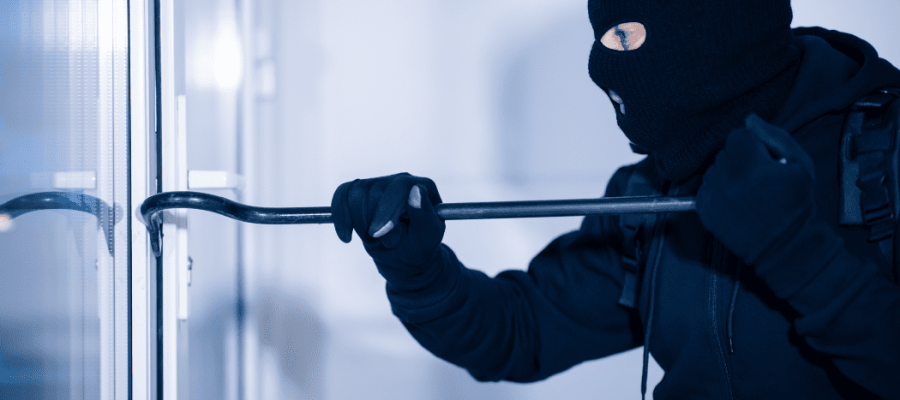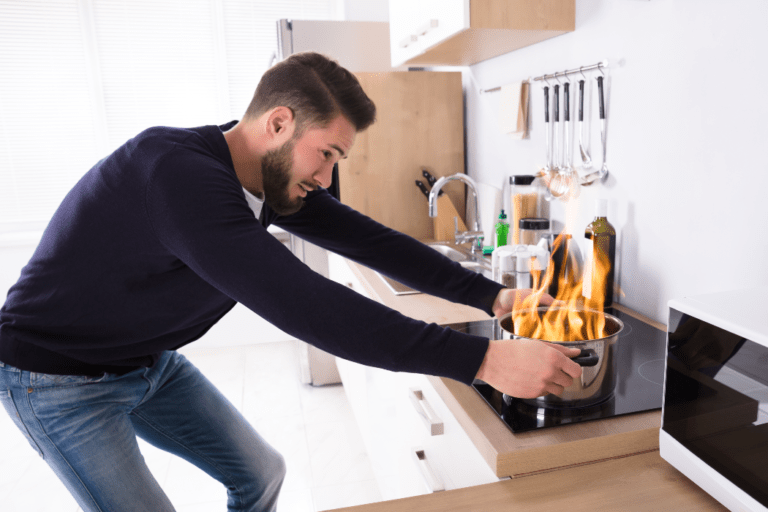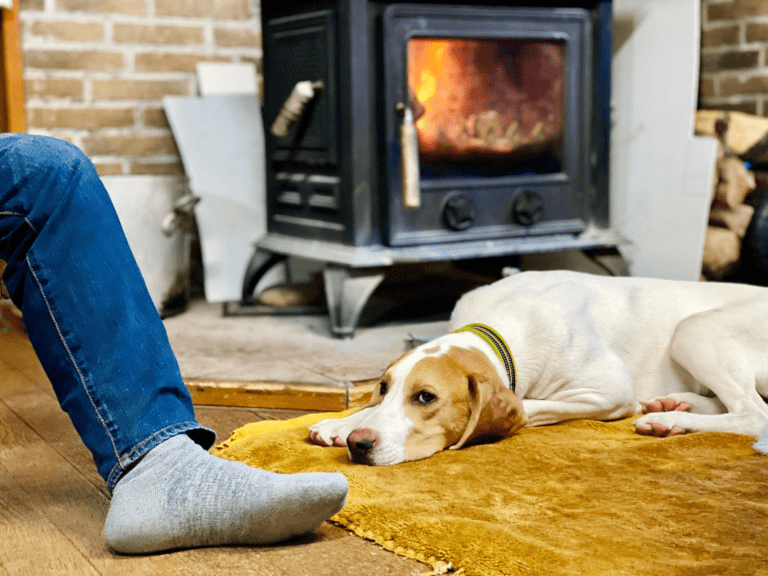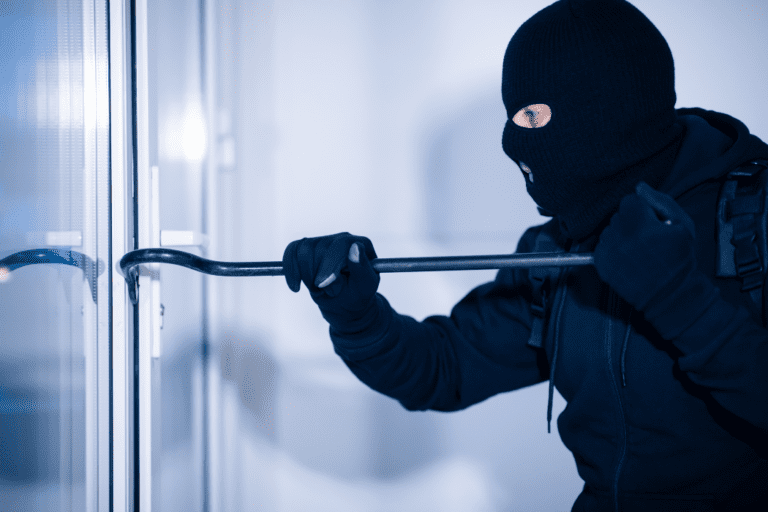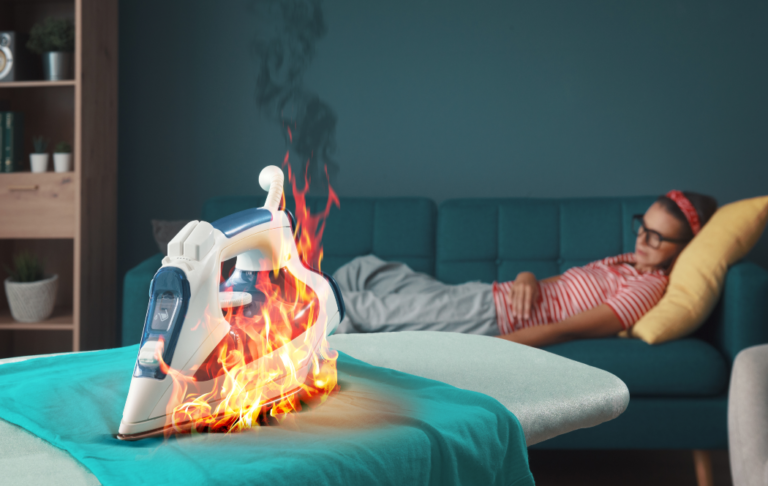Developing a home security checklist is essential to ensure the safety of your home and property. Home security is a major concern for any homeowner, and this checklist can help you assess your current protection level.
Your checklist should include the external and internal areas of your home, including windows and doors. Identify any areas where thieves or intruders can access and take action to protect those areas.
You should also consider investing in a home security system. These days, many of these systems are affordable and can automate many tasks. Using this technology can help you reduce the risk of fires, intruders, and accidents.
Home security systems include lights, cameras, and sirens to provide a warning to potential burglars before they enter your home. These systems can also record anyone who approaches your door so that police can track who has broken into your home.
Developing a home security checklist will help you understand which systems and features you should invest in. It is important to update this checklist regularly, since it will give you a good idea of what should be monitored in your home.
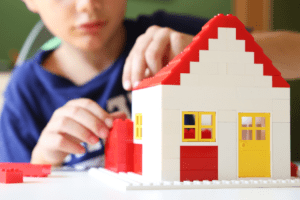
Protecting your home is a top priority for any family. Statistics show that homes without security measures are five times more likely to be burgled than homes with proper security measures. To ensure your home and property are safe, you should implement a home security checklist, which includes locking the doors and windows. It is also a good idea to install an alarm, which can keep criminals from breaking in.
There are many ways to improve the security of your home and property. An intruder alarm system and CCTV cameras are two of the most common methods, and are vital to preventing break-ins and theft. However, there are also other, more affordable, steps that you can take. These include training your children about home security, installing tamper-proof lighting, and installing a fence around your property.
Simple Steps to Ensure Your Home’s Security and Safety
There are many things you can do to ensure your home and property are safe from burglars. One of the best ways to deter burglars is to install home security cameras. They record footage on hard drives or the cloud, and they can provide evidence of a crime if it takes place. You can install a home security camera system yourself, or hire a professional to do it for you.
You can also get the help of your neighbours, who will help keep an eye on your property and safe from intruders.
Investing in outdoor lighting can also help discourage intruders. Installing outdoor lighting in front and back yards can make your house look less inviting to intruders, and it helps prevent accidents on front steps. You can even install a smart outlet to set the lights on a timer.
Another home security tip is to install motion sensor lights. These lights react to movement so that when someone approaches, they will be able to see them.
Home Security Checklist – Teach Children Home Security basics
Teaching children home security basics is essential to prevent break-ins and protect them from harm. It also helps them avoid panicking if something happens. Teach them never to leave keys on the table or in an open space. If you are away, ask an adult or trusted neighbour to hold the keys.
Children of all ages need to learn that only adults are allowed to unlock the door and to call 999 in an emergency. They should also learn about the importance of a home security system and who is allowed to enter the home when you are away. They should also be made aware of any curfews.
Home security checklist – Fit tamper-proof lighting
Tamper-proof lighting for home security can be very helpful for securing your property. It can be used to light up the areas that are likely to encourage burglars to enter your property. These include windows, back doors, and gates. By lighting up these areas, potential burglars can be scared off and not attempt to break into your property.
Dark entryways and pathways can serve as a safe haven for a thief, and will increase the risk of an attempted burglary. Motion-activated lighting in the exterior of your home is another great option.
Among the most common types of tamper-proof lighting are floodlights, which switch on when movement is detected. These are ideal for large areas, such as the back garden or driveway. There are also low-energy LED lanterns available. These can be switched on from inside the property and activated on a PIR when movement is detected.
Passive infrared (PIR) sensors detect infrared radiated by all heat-emitting objects – including people. Although this type of emission isn’t visible to the naked eye, sensors that use infrared wavelengths are able to detect it.
This type of lighting is also suitable for front porch areas. Tamper-proof lighting can also be mounted on walls and ceilings.
Tamper-proof lighting is a great way to secure your home at night. This type of lighting is available in a variety of styles and sizes. It is also energy efficient. You can choose between surface mount, corner mount, or recessed mounting.
Home security checklist – Install a high fence around your property
Installing a high fence around your property can increase the safety and security of your home. These fences can provide privacy and keep the neighbourhood noise out. In addition, they can be a good option for families with young children, who need privacy to sleep.
However, you should be aware of local rules and regulations when installing a fence. There may be rules that require you to get a building permit.
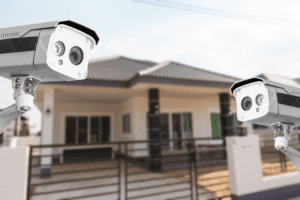
While high fencing can provide added protection, it is not always feasible. One made of PVC or wood with plenty of space between its boards will increase visibility and deter burglars.
Home security checklist – Secure your garage
Keeping your garage secured is an important part of your home’s security plan. You should lock all garage doors, including the service door, to prevent thieves from entering the garage. In addition, the garage door opener should be locked and stored in the home, out of reach of potential burglars.
Garages are often neglected when it comes to home security, but there are several things you can do to make your garage a more secure and efficient space for your cars.
The first step to securing your garage is to have a professionally fitted garage door. This will reduce the likelihood of theft, and a professionally fitted door will provide you with peace of mind.
One of the best ways to protect your home from burglars is to lock the garage door. Burglars usually “case” a home before striking, and a garage door is a prime target when there are valuable tools or cars in storage. A strong security system will prevent burglars from entering your garage, and live surveillance security cameras will help you see what’s going on inside.
Another important step is to cover garage windows. While windows are a great source of natural light in a garage, they also give burglars a clear view of your valuables and vehicles. You can cover windows with window coverings or frosted glass, which is a cheap and effective way to block the view from potential thieves.
Using motion-activated floodlights around the garage will deter break-ins at night. This will be especially helpful in detached garages. You can also buy smart lighting that connects to your alarm system. And remember to change the code often to keep burglars away. You don’t want anyone to know your garage’s passcode!
Home security checklist – intruder alarm system
Intruder alarm systems are available for purchase at an affordable price, and the technology behind them can significantly reduce the risks of accidents, intruders, and fires. A home security checklist will go room by room through your home and list all of the different safety systems you should have in place. The checklist should be updated regularly to keep your home as safe as possible.
A home is probably the biggest investment that most people make in their lives, so keeping it safe and secure is crucial. You can protect your property by installing an intruder alarm system, including a monitoring service. It can also help keep your home and belongings safe when you’re away.
An intruder alarm system for home security can give you peace of mind in the event of an intrusion. It works by alerting the authorities, and it can also play a pre-recorded message. The message can play repeatedly so that the police can hear it, even if the call is put on hold. The control box is the heart of the system, and it is connected to the alarm circuits. Often, it is placed in an out-of-the-way place.
Popular providers of intruder alarm systems include ADT, Verisure, Ring and Yale.
There are several types of intruder alarms. One type of system is called an open-circuit system. This uses two metal strips that are spaced apart. When a foot steps on the mat, the strips complete a circuit. The open-circuit system is more effective when used on the perimeter of the home, while closed-circuit systems work best at points of entry.
How to Protect Your Home – Ex-Burglar’s Tips: Video
An intruder alarm system can also be equipped with smoke, heat, and carbon monoxide detectors. The detectors are typically installed near doors and windows that have glass. They can alert the intruder if they are in the area and can also alert the neighbours if the intruder is nearby.
Intruder alarm systems can be self-installed or installed by a security firm. While they are more expensive than other providers, they offer many advantages. The alarms are simple to install, and they come with a warranty that lasts for as long as the equipment is in good working order.
Home Security Checklist – Secure Doors
Security systems for doors can be a key part of home security. Most people open their doors when someone knocks or rings a doorbell. But a door that is opened without confirming the identity of the person at the door, can give an intruder access to your home.
Installing door chains is an easy way to prevent intruders from opening your door, and you can also use a door viewer to view who is outside without opening it.
One of the easiest places to gain access to your home is through the door. It is important to check all exterior doors for security and make sure the locks are working properly. This includes double-checking the locks on all doors, as well as examining the quality of the locks. You should also make sure the door is the correct thickness, and that it fits properly.
Solid wood doors are one of the strongest and most effective types of doors when it comes to security. They’re about 1.75 inches thick, making them very difficult to break into. Plus, they can be installed with powerful deadbolt locks and a jamming system. However, these doors require more maintenance than other types and are less energy-efficient.
Installing high-quality locks on your doors is vital to protecting your home. Even a simple deadbolt lock will make it more difficult for an intruder to get into your home. Moreover, ensure that your door frames are solid enough to withstand any attempted break-in.
Also, avoid using outdated doors that pose unnecessary risks. Replace them with newer models with high-quality locks. You can also install smart locks that engage by remote control.
You can choose from solid-core doors made of steel, wood, or a composite of wood and fibreglass. Steel security doors are the most sturdy of the available options, but wood and fibreglass security doors are equally durable and difficult to break into.
Home Security Checklist – CCTV Cameras
If you’re worried about burglaries, you should have surveillance cameras installed around your property. This can protect your home even when you’re not there. Intruders avoid homes with cameras.
When selecting CCTV cameras for your home security, consider the following factors: camera type, indoor/outdoor viewing angle, and connectivity. Ideally, your home surveillance system should be placed in an area with plentiful lighting, be able to capture video in low-light conditions, and have night vision. Lastly, it should be able to capture wide-angle shots.
Also, be sure the video quality is high. A higher resolution will provide clearer footage with better details. At a minimum, you should go for 1080p. Also, keep in mind that security isn’t limited to daytime hours and that nighttime security is more dangerous.
The best places to conceal your security camera include hard-to-reach surfaces. For example, you can place the camera on high walls or in a closet. For a more discreet installation, you can conceal it behind wall-mounted objects like art, cabinets, and ceiling fans. Try to avoid installing the camera in a high-traffic area, such as a living room or bedroom.
Another consideration is the focal length of the CCTV camera. Generally, a CCTV camera must have a low-light capability, as most crimes occur during the night. The focal length is the distance from the lens to the image sensor when the focus is on an object. This distance is generally measured in millimetres.
There are two types of CCTV cameras: fixed-length CCTV cameras and varifocal cameras. Varifocal cameras can be adjusted to fit specific criteria, whereas fixed-length cameras cannot.
Home security checklist – installing a low fence in the front
Installing a low fence in front of your home is a great way to deter burglars and ensure that your home and property are safe. In addition to keeping your home and property safe, a low fence can also improve curb appeal.
There are a variety of different fence designs to choose from. These fences can also increase the value of your property. There are many things to consider before you get started, however.
First, choose a fence that is high enough to deter thieves but low and spacey enough so that your frontage is visible from the outside. This will allow your neighbours to keep an eye out for you. And leave burglars nowhere to hide.
When choosing a fence for the front of your home, make sure it meets any neighbourhood rules. Some neighbourhoods have specific rules regarding how fences look, such as which side should be facing the public. In addition, some areas require fences to be set back two to eight inches from property lines. You may also need to apply for a building permit to install a fence.
Adding privacy to your home is important. A fence can deter burglars while also adding visual appeal. A high-security fence can also help protect your children and pets from harm.
Home Security Checklist – Locks on Windows
Installing additional locks on your windows is another way to keep out intruders. Adding a pin lock will prevent burglars from opening your windows, while installing a keyed lock will provide another barrier for a burglar to overcome.
Ultimately, these security improvements can help you save money on your home insurance policy. If you take action, you can reduce your insurance premium by as much as 5%.
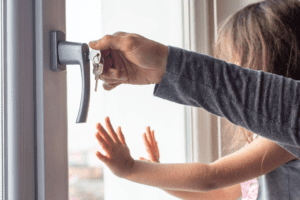
Using a home security checklist can help ensure your home and property are safe and secure. This checklist can help you create layered security, minimising the chances of forced entry.
It also helps you identify vulnerabilities throughout your property and valuable adaptations. This can help you protect yourself and your family in case of a break-in.
Home security checklist – home insurance coverage
Home insurance protects your home from a variety of different risks and hazards. It is essential that you have the right insurance cover to protect your home and property from theft and damage. It can help you rebuild your home and replace your personal belongings in case of a fire.
Most policies cover common risks, but the level of protection and limits will vary from company to company. Depending on your policy, you may be covered for replacement costs or actual cash value. Using a home safety checklist can help you spot any minor issues in your home, helping to prevent future insurance claims.
In addition to covering damage to your home, homeowners insurance also covers your legal liability. It can help replace items you’ve lost or damaged, as well as pay for temporary living expenses. It may also cover medical costs. If you’ve bought a new home, you may want to consider adding on a home warranty to protect your property and make sure it’s protected against unexpected costs.
Home security checklist – letterbox restrictor
Many criminals and burglars target letterboxes in order to gain entry to homes, this is called letterbox burglary. Although a letterbox is a necessary part of most houses, it could pose a threat to your home if it isn’t secured properly.
The burglar will generally push through the mailbox to open the door. They may also use a fishing pole with a hook attached to the end to search for keys that are left near the door.
A letterbox restrictor is a device that prevents theft through your letterbox. It restricts the amount of space that your inner flap can open in your letterbox. This stops thieves from prying open your letterbox to search for keys or open the flap. Additionally, it prevents them from pushing through rods or other tools to gain entry to your home.
You might also consider installing a mail cage. A mail cage can serve two purposes. First, it will keep your hallway and entryway clean by collecting all your mail. Second, it makes it difficult for thieves to use their contraptions to alter your locks. A mail cage can help you to keep your property safe and block burglars from seeing your letterbox.
Alternatively, consider getting rid of your letterbox completely and installing an outside mailbox instead. This will stop all risks from the threat of letterbox theft. Removing your letterbox will make it that much harder for burglars to access your property. And you’ll still have access to your mails through your external standalone mailbox.
A front door with no letterbox is a good option if you are planning to replace your front door soon, or if you have been thinking about it for some time. It’s a great opportunity to make your front door more secure.
Additionally, keep your keys hidden – away from your front door. Especially if your front door has glazed panels. This is so that burglars won’t be able to spot your keys as they pass your front door or window.
Installing key-operated locks is a good idea for a mailbox. Locks that turn with a thumbpiece may be vulnerable to letterbox theft. Thieves and burglars could use any tool to get through the flap of the letterbox and open the door by turning the thumbpiece. Key-operated locks give you peace of mind and security.
In Conclusion
Probably the biggest asset you own is your home, and it’s important to protect it against burglary, vandalism, and theft. Investing in a home security system can help ensure that your property and home are safe, and it’s worth looking for a monitoring service as well.
Insurance can also help protect your property, but it only covers damages. the home security checklist we’ve compiled here can help you have peace of mind and keep your home safe and secure. 🙂


